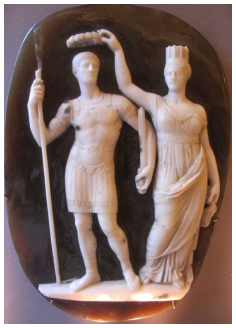From Legacy Systems to Student-Centred Innovation
How a Leading Tertiary Education Institution Transformed Experience, Efficiency, and Engagement

Client Overview
Our client is a major tertiary education provider with over 30,000 students and more than 2,000 staff across its faculties and campuses. Known for its academic credibility and deep community connections, the institution faced growing pressure to deliver modern, seamless digital experiences to meet student expectations and improve institutional performance.
Despite past successes, the university’s reliance on legacy systems, paper-based processes, and siloed service delivery models made it difficult to respond to emerging needs. Recognising the need for strategic transformation, the institution engaged Anthosa Consulting to lead the design and execution of a whole-of-institution digital transformation program.
Anthosa brought together the Digital Transformation Strategy Accelerator, Transformation 2.0™ (T2.0) philosophy and its five-step legacy modernisation framework to guide the rollout of custom-built digital solutions across all departments.
Challenge
The institution’s challenges were widespread and deeply interlinked:
- Fragmented systems and paper-heavy workflows created operational bottlenecks, manual rework, and delays in service delivery.
- Students lacked digital-first experiences, which impacted satisfaction and retention—particularly among first-year and part-time students.
- Staff were burdened by administrative overhead, leaving limited time for student engagement or academic innovation.
- Innovation initiatives were decentralised and lacked a coordinated strategy to scale or deliver measurable outcomes.
- Operating costs were high, with much of the budget consumed by process inefficiencies and outdated technology infrastructure.
The institution needed a structured yet flexible approach to transformation—one that could demonstrate quick wins, adapt to diverse department needs, and build a strong foundation for scalable, future-ready change.
Solution
Anthosa applied its Transformation 2.0™ methodology, consisting of five phases—SHAPE → DISCOVER → JUMPSTART → SCALE → EMBED—and embedded its five-step innovation process during the JUMPSTART phase of every department initiative:
- Discover Your Tech
- Liberate Your Data
- Modernise Your Legacy
- Streamline Your Planning
- Humanise Your Future
This layered approach ensured that each department’s transformation was strategic, service-aligned, and experience-led—without overwhelming teams or exceeding budget constraints.
SHAPE: Creating a Shared Vision and Strategic Intent
Anthosa began by aligning the executive and senior leadership teams around a shared transformation vision—anchored in student success, operational excellence, and workforce enablement.
- Defined a “True North” outcome across faculties and services: to become a student-centred, AI-enabled institution delivering high-quality, modern education experiences.
- Conducted initial opportunity mapping across major service domains (teaching, student services, academic support, operations).
- Identified early focus areas where transformation could drive rapid and visible impact.
DISCOVER: Co-Designing the Institution-Wide Roadmap
Anthosa worked with cross-functional leaders to conduct a detailed current-state assessment and co-design a prioritised transformation roadmap.
- Mapped service challenges and data flows across student and staff journeys.
- Engaged department heads and frontline teams to design initiatives with clear, measurable outcomes.
- Defined a transformation portfolio of initiatives to be piloted and scaled progressively across departments.
JUMPSTART: Rapid Pilots Using the Five-Step Framework
For each department initiative—whether in enrolment, teaching support, course management, or student services—Anthosa applied its five-step framework during the JUMPSTART phase:
1. Discover Your Tech
Assessed each department’s existing systems and tools. Identified tech debt, overlapping tools, and integration pain points.
Example: In the Business faculty, outdated learning management tools lacked mobile support and didn’t integrate with the student records system, causing duplicate entries and mismatched feedback loops.
2. Liberate Your Data
Unlocked siloed data sources and consolidated them into a standard data model basedon on Higher Education Reference Models (HERM) by The Council of Australasian University Directors of Information Technology (CAUDIT) using a federated data platform with a decentralised architecture. Enabled real-time access to course progress, support requests, and feedback.
Example: In Student Services, Anthosa created a shared data layer that integrated student support records, service desk requests, and academic interventions, empowering advisors to act on insights.
3. Modernise Your Legacy
Replaced paper-based forms, manual workflows, and bespoke spreadsheets with microservices-based digital workflows with intuitive interfaces built on a modern technology stack.
Example: Enrolments, learning content creation, individualised learning plans, and assignment submissions were digitised for the Engineering faculty, dramatically reducing administrative delays and errors.
4. Streamline Your Planning
Adopted KaikaFlow to help teams plan and track transformation progress in three-month cycles, using an iterative build-measure-learn feedback loop to continuously evolve the product ecosystem, replacing slow annual planning cycles and project-based funding models.
Example: Faculties used live dashboards and iterative product development lifecycles to coordinate real-time planning between academic staff, course coordinators, and student services.
5. Humanise Your Future
Focused on improving experiences for both students and staff. Introduced journey mapping, iterative testing, and feedback loops to refine each solution before rollout.
Example: In the pilot of the AI-powered collaboration hub, Anthosa worked directly with students and faculty to co-design features that supported interdisciplinary, project-based learning on real-world challenges.
SCALE: Expanding the Transformation Across the Institution
With successful pilots in place, Anthosa supported the institution in scaling solutions across all academic and operational departments:
- Introduced common design standards and reusable service blueprints.
- Built internal capability in digital delivery through coaching and governance support.
- Enabled cross-department collaboration using shared platforms and integrated data services.
“We didn’t just digitise—we transformed how our departments worked together. Our course planning, student advising, and teaching support are now connected, coordinated, and measurable.”
EMBED: Sustaining Change and Continuous Improvement
Anthosa helped the institution embed transformation capabilities through governance, knowledge sharing, and innovation leadership.
- Established a Centre for Digital Innovation to drive ongoing improvement cycles and lead experimentation with new service ideas.
- Deployed KaikaFlow as the institution’s central platform for transformation governance, outcome tracking, and initiative reporting.
- Embed Anthosa’s Transformation 2.0 methodology and five-step legacy modernisation framework into every new service change effort.
Results and Benefits
30% Reduction in Operating Costs
Through digital content delivery, digitised workflows, and the removal of paper handling, the institution cut operational overheads and reinvested savings into innovation.
37% Reduction in Administrative Costs per Student
- Digital workflows and automated processes replaced manual, high-cost activities across academic and support teams.
- Student self-service portals reduced staff workload and improved access to services.
Increased Student Retention Rates
- Enhanced digital engagement and faster support response times contributed to improved retention, especially among first-year and part-time students.
- Predictive analytics enabled early intervention and more effective student advising.
Improved Student Satisfaction
Mobile-first tools, real-time feedback, and faster access to services resulted in higher student satisfaction scores and Net Promoter Scores (NPS).
Improved Collaboration and Staff Efficiency
Integrated systems and shared digital workspaces reduced duplication and increased cross-team collaboration. Manual entry was reduced by over 40%.
AI-powered Phygital Collaboration Hub Launched
The hub, co-designed with students and staff, enabled interdisciplinary problem-solving, AI-supported teamwork, and industry engagement—creating a model for future-ready education.
Sustainable Innovation Culture Embedded
KaikaFlow and Anthosa’s capability uplift model empowered internal teams to lead their own change cycles, making innovation a core part of institutional life.
Creating a Hybrid Source Distribution Model
As part of the transformation, the institution—guided by Anthosa Consulting—built a suite of custom digital components to modernise student services and support innovation. This raised an important question: how to share and protect source code internally while enabling broader collaboration across the academic sector. A thoughtful hybrid distribution approach was developed to balance strategic value with sector-wide impact. (More on this will be shared in a future case study.)
What the Customer Says About Anthosa
“What impressed us was how Anthosa managed to be strategic, structured, and human all at once.
Their approach gave us the confidence to move quickly without losing sight of our people or our purpose. The five steps gave every team a clear roadmap, and the T2.0 model helped us build momentum without chaos.
We’re now seeing results not just in metrics but in morale. Students are staying, staff are collaborating, and we’re ready for what’s next.”
— Chief Operating Officer, Tertiary Education Institution
Talk with Us Today!
Whether you’re just starting or ready to scale digital transformation, Anthosa Consulting’s Digital Transformation Strategy Accelerator, Transformation 2.0™ and five-step legacy modernisation framework are built to deliver measurable outcomes and lasting impact.
Let’s talk about your transformation journey. Schedule an introductory consultation with our team today.

